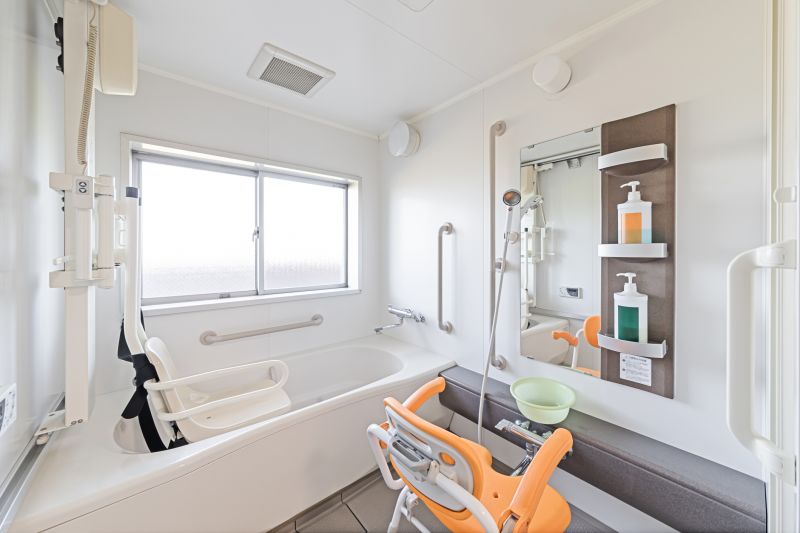Favorite Accessibility Home Improvement Products for Better Living
Identify trusted solutions that help improve safety, accessibility, and independence in your home environment.
 Creating a more accessible home environment can significantly enhance safety, independence, and comfort for individuals with mobility challenges or other accessibility needs. Incorporating thoughtfully selected products can help address common obstacles such as stairs, narrow doorways, or difficult-to-reach fixtures. These home improvements are designed to be functional and easy to integrate into existing spaces, promoting a more inclusive living environment.
Creating a more accessible home environment can significantly enhance safety, independence, and comfort for individuals with mobility challenges or other accessibility needs. Incorporating thoughtfully selected products can help address common obstacles such as stairs, narrow doorways, or difficult-to-reach fixtures. These home improvements are designed to be functional and easy to integrate into existing spaces, promoting a more inclusive living environment.
Top Overall Option
Multi-Functional Accessibility Ramp
A versatile, adjustable ramp designed to accommodate various door thresholds and outdoor terrain, providing smooth wheelchair or walker access. It features slip-resistant surfaces, foldable sections for easy storage, and sturdy construction to ensure safety and ease of use. This type of ramp can be customized to fit different spaces, making it a practical choice for many households seeking to improve accessibility.
Types of Products For Accessibility Home Improvements
Wheelchair Ramps
Portable and permanent ramps designed to facilitate wheelchair access over steps or uneven terrain.
Grab Bars and Handrails
Sturdy bars installed in bathrooms, hallways, or staircases to provide support and stability.
Walk-In Tubs and Showers
Accessible bathing solutions that eliminate the need to step over high tub walls, often with built-in seating.
Lever-Style Door Handles
Easier-to-operate door hardware that requires less grip strength than traditional knobs.
Widened Doorways and Hallways
Structural modifications to create more space for mobility aids and easier navigation.
Lowered Light Switches and Counters
Adjustments to reach heights for individuals with limited mobility or in wheelchairs.
Non-Slip Flooring
Surface treatments and materials that reduce the risk of slips and falls in high-traffic areas.
Stair Lifts
Motorized chairs installed on staircases to transport individuals between floors safely.
Adjustable Bed Frames
Beds that can be raised or lowered for easier transfer and comfort.
Accessible Kitchen Fixtures
Lowered sinks, pull-out shelves, and accessible appliances designed for easier use.
Popular Choices
Lightweight, foldable ramps suitable for temporary or outdoor use with various door heights.
Seating options that allow users to shower comfortably and safely, often with adjustable height.
Closet fixtures that can be lowered for easier access and raised when not in use.
Modular systems that enlarge existing door openings without extensive construction.
Sensors that activate lighting with minimal effort, ideal for limited mobility.
Seats that add height to toilets, making transfers easier and reducing strain.
Single-lever or touch-activated faucets designed for easier operation.
Zero-threshold shower bases that eliminate the need to step over a lip.
Accessible shelving and storage designed for easy reach and organization.
Countertops that can be raised or lowered for different users and tasks.
From entryway modifications to bathroom adaptations, there are numerous product options available to support accessibility. Ramps can replace stairs to provide wheelchair access, while wider doorframes facilitate easier movement through rooms. Lever-style door handles and pull-down shower heads are examples of fixtures that reduce strain and improve usability. Many products are designed with safety features, such as non-slip surfaces and sturdy handrails, to minimize the risk of falls and injuries.
Choosing the right products involves considering the specific needs of the household, the layout of the home, and the level of mobility assistance required. It is important to evaluate the dimensions, installation requirements, and compatibility with existing structures. While some modifications can be DIY-friendly, others may benefit from professional installation to ensure safety and compliance with local building codes. Thoughtful planning and selection can make a meaningful difference in creating a more accessible and welcoming home environment.
Overall, investing in accessibility home improvement products can contribute to greater independence and quality of life. Whether making small adjustments or comprehensive renovations, there are numerous options to explore that can fit various budgets and preferences. This approach not only supports safety but also fosters a sense of confidence and autonomy for all residents.
Key Buying Considerations
- Assess the specific mobility needs and limitations of the household members.
- Measure doorways, hallways, and available space to ensure proper fit of products.
- Consider ease of installation, especially for DIY-friendly options.
- Check weight capacities and durability of products like ramps and grab bars.
- Prioritize safety features such as non-slip surfaces and secure mounting points.
- Evaluate the compatibility of new fixtures with existing home infrastructure.
- Think about future needs and whether the products can be adjusted or expanded.
- Review local building codes and regulations related to accessibility modifications.
- Determine your budget and explore options that balance functionality with affordability.
- Look for products with clear instructions and customer support options.
- Consider aesthetic preferences to ensure modifications blend with home decor.
- Identify whether professional installation is recommended or required.
- Assess the ease of maintenance and cleaning for products like flooring and fixtures.
- Research warranty and return policies for peace of mind.
- Plan for potential changes in mobility needs over time.
This page contains affiliate links. We may earn commissions from qualifying purchases to support our content.
